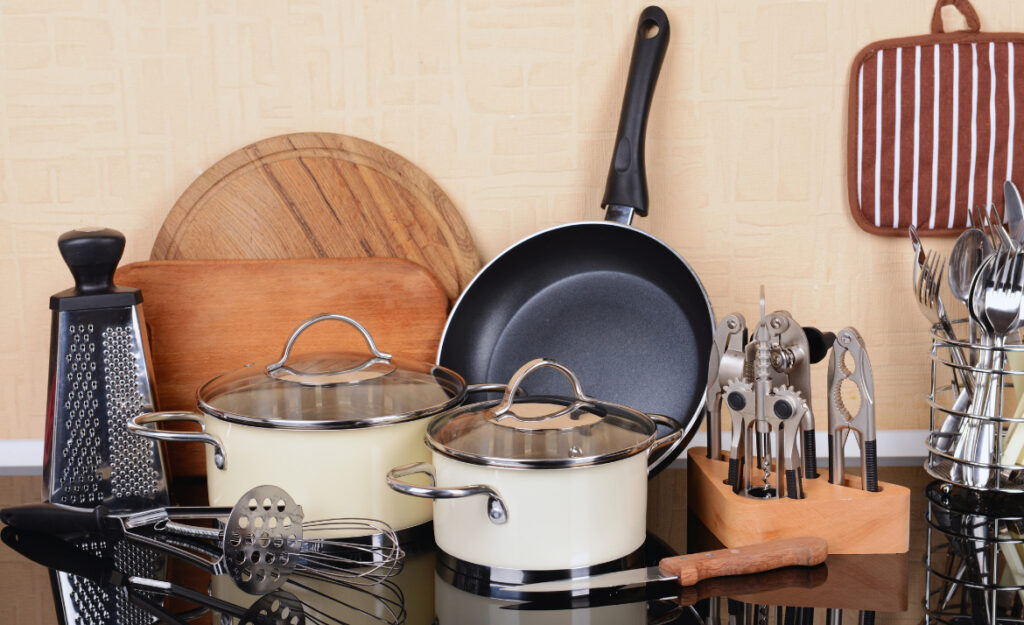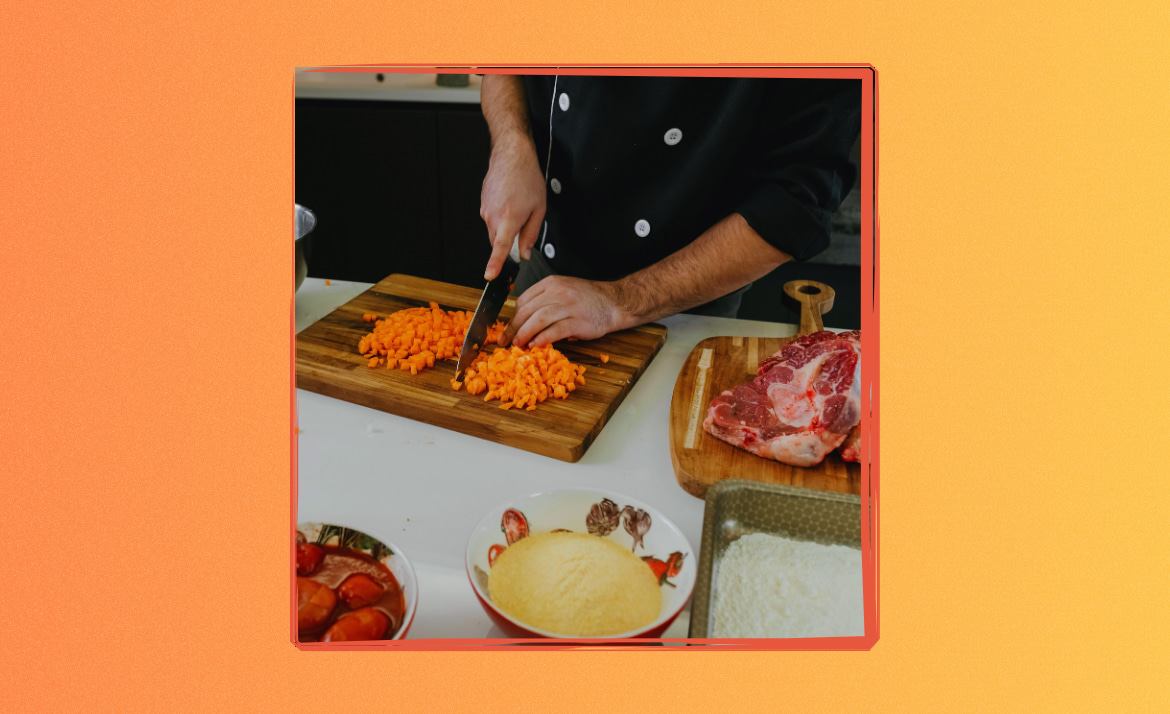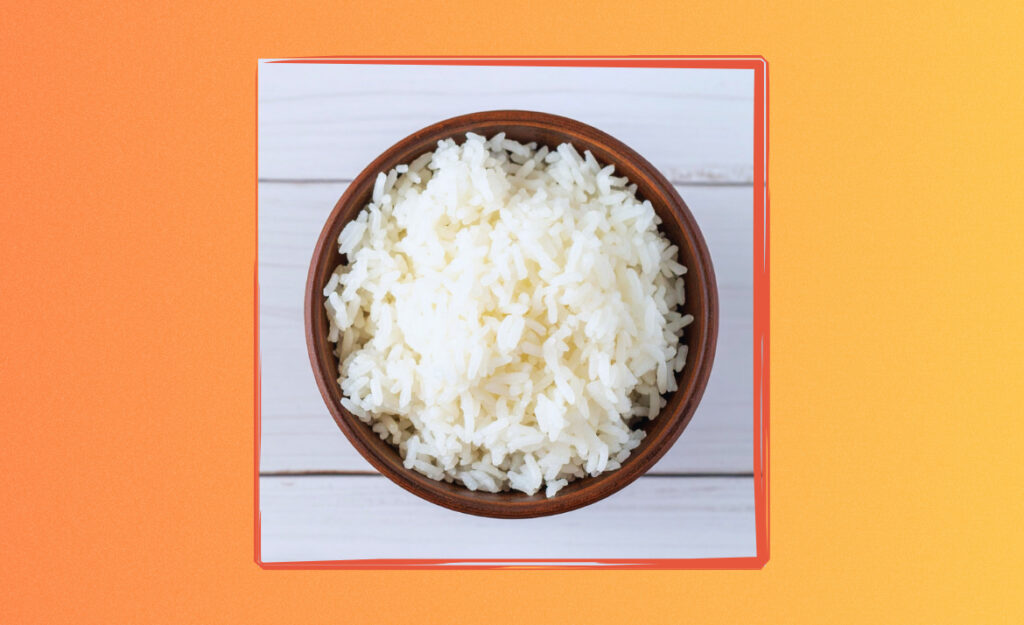
Picture this: You’re hungry, the clock is ticking, and dinner isn’t going to make itself. We’ve all looked at a pile of ingredients and wished for shortcuts. Tucked away in drawers and cabinets, essential kitchen tools can give you exactly that.
Cooking does more than just fill your plate. It’s a daily ritual, a creative effort, and a balancing act. With the right essential kitchen tools at your fingertips, the prep, cook, and clean-up all finish up faster, so you spend less time fussing and more time enjoying your food.
Whether you’re packing lunches for the week or pulling together a Sunday feast, these clever gadgets and utensils cut through hassle. Ready to see which kitchen essentials belong in your lineup? Let’s dig in for a closer look at what saves you minutes—and frustration.

Knife Skills Basics: Safer Slicing for Confident Home Cooking
Learn the best techniques for cutting, gripping, and maintaining your knives with real-world tips and step-by-step advice.Slicing and Dicing Gets Simpler with Versatile Knives and Cutters
Want to prep vegetables or slice proteins in half the usual time? The first step is reaching for the right knife or slicing tool. Consistency speeds up recipes and makes cleanup easier, too.
Multi-purpose chef’s knives handle most produce and proteins. Pair them with a handy mandoline or vegetable chopper for uniform cuts. When you rely on sharp, well-chosen essential kitchen tools, prepping salads, stir-fries, and even snacks takes less effort.
Choosing the Right Knife for Each Task
A chef’s knife handles tomatoes, carrots, and chicken with equal confidence. For bread, use a serrated blade—it glides through crust without crushing it. Keep blades sharp for speed: dull edges slow you down and risk injury. Sharpen regularly, just like brushing teeth to avoid problems later.
For mincing garlic quickly or trimming herbs, turn to a paring knife. A smaller blade means more control during delicate tasks. Home cooks who slide a paring knife through strawberries or citrus notice instantly: fewer slips, less waste, and faster prep.
When prepping bigger cuts of meat or large veggies, a sturdy cleaver lets you chop or section with one firm motion. Meat-eaters sometimes keep a cleaver in their tool drawer for splitting chicken or ribs, saying, “That was way easier. Next time, I’ll do this first.”
Mandolines and Vegetable Choppers Simplify Repetitive Prep
If uniform slices matter to your cooking, reach for a mandoline slicer. Set the thickness, glide carrots or zucchini across, and marvel at identical pieces in seconds. It’s like stacking coins: neat, even, and instantly satisfying.
Vegetable choppers, sometimes called food dicers, deliver quick cubes for salsas, salads, and soups. Place half an onion, push the lid, and you’re done—no tears, just bite-sized pieces. Try it with peppers or potatoes to speed up taco night or breakfast hash.
Use finger guards or safety holders for both tools to protect hands. Quick, safe, and mess-free prep makes the entire cooking process less daunting, especially on busy weeknights.
| Tool | Best For | Time Saved | Takeaway |
|---|---|---|---|
| Chef’s Knife | Chopping, slicing, dicing | 5+ min/meal | Sharpen often; suits 80% of prep |
| Mandoline | Uniform slicing | 10 min/meal | Use for salads/gratins |
| Vegetable Chopper | Fast dice, no tears | 8 min/meal | Perfect for onions, salsas |
| Serrated Knife | Breads, cakes | 3 min/meal | Prevents crushing; good for soft foods |
| Cleaver | Tough cuts, bones | 6 min/meal | Saves strain—one quick chop |
Measuring Matters: Streamlining with Smart Tools
Swapping guesswork for accurate measuring transforms recipes. Just-right portions build consistency and speed up cooking, especially with multitasking. Measuring cups, digital scales, and measuring spoons work together for smoother steps every time.
Precision can mean the difference between a dry cake or a perfect one. Organized utensils prevent second-guessing, turning chaos into confidence. Essential kitchen tools in this category mean everything falls into place, even in unfamiliar recipes.
Organize Measuring Tools for Fast Access
Store measuring cups and spoons nested by size and in an easy-to-grab spot on your counter or drawer. Use hooks or bins to keep digital scales handy. That way, when a recipe calls for 1/3 cup or a tablespoon, you aren’t rifling through clutter or doubling work.
- Keep all measuring tools within arm’s reach of work area—avoid last-minute drawer digging when time is tight.
- Label dry/wet measuring cups—this prevents swapping and saves cleanup in baking or mixing sauces.
- Use a digital scale for accuracy; place bowl/tare, add items, watch the numbers, and move to the next step instantly.
- Pair measuring spoons on a metal ring—no more lost pieces, and you can scoop spices in sequence without resetting.
- Group everything together on a tray or caddy, so the entire set travels to where you cook instead of running back and forth.
Following these organizational tweaks keeps your cooking rhythm steady and minimizes reset time during each step.
Integrate Both Classic and Digital Tools
Digital scales shine for bread, coffee, and recipes needing exact gram-based amounts. Classic measuring cups are best for scooping flour, grains, or sugar, where a quick fill-and-level approach works. Combining both lets you adapt on-the-fly and expand your cooking range.
- Use the digital scale for yeast breads and pour-over coffee—zero out, add, and track by the gram.
- Rely on measuring spoons for spice blends; pour over a clean bowl to catch overflow and save on cleanup.
- Classic liquid cups excel with soups and broths. Pour to the line, check against recipe, and pour directly into pots.
- Weigh meat or cheese to control portions and save on guesswork—especially helpful when stretching ingredients or meal prepping.
- Blend both systems for international recipes; some need metric, others use cups—having both means fewer conversion errors or delays.
These habits set you up for smooth execution and reduce the risk of recipe mishaps or wasted ingredients.
Batch Cooking Becomes Manageable with Bigger Pots and Pans
If you want to prepare several meals in a single go, large-capacity cookware is among the most essential kitchen tools for home cooks. It eliminates constant pan swapping, which shaves minutes at each stage.
Picture simmering a week’s worth of chili or roasting veggies for salads. When your pots, pans, and sheet trays match your planned volume, you transition from step to step without pausing to wash or refill.
Scenario: Sunday Meal Prep with Reminders
On a Sunday, set up a large Dutch oven for chili on one burner, a sheet tray of root veggies in the oven, and a stockpot for pasta. As soon as one batch finishes, the next starts. “I prepped three meals; no sink breaks in between,” a home cook might say, showing really how large pots save time on cleaning, too.
Switching to large frying pans for breakfast scrambles eliminates multiple small batches. When your pan matches your ingredient load, you fold eggs, meats, or vegetables in one round—no waiting while the rest get cold.
This approach requires storage space but pays off in fewer sets of dirty cookware and more food prepared per minute.
List: Batch Cooking Tools and Their Time-Saving Roles
- Large Dutch Oven: Preps soups, stews, or braised meats in double batches; reduces hands-on time by 30% for weekly meal plans.
- Gigantic Sheet Trays: Roasts or bakes entire produce bags or chicken pieces together; avoids oven bottlenecks.
- Multi-Quart Stockpot: Boils pasta, potatoes, or broths in a single go; eliminates the need for multiple pots.
- Big Skillet: Fries, sautés, or scrambles with space for mixing; suits meal prep for families or quick guests.
- Mini Slow Cooker: Handles sides or sauces while you cook mains; perfect for hands-off kitchen support during busy schedule mornings.
Each of these tools supports meal prep, multitasking, and bigger batch output, letting you reclaim both your stove and free moments.
Rapid Clean-Up with Nonstick Utensils and Dishwasher-Safe Picks
Swapping out sticky, hard-to-clean utensils for nonstick and dishwasher-safe options can shave tedious minutes off nightly chores. Reduced scrubbing lets you reset the kitchen smoothly, preparing for whatever comes next.
Utensils covered in silicone or nylon don’t hold onto sauces, cheese, or cooked-on bits. Dishwasher-safe gadgets go from countertop to rack, with zero drama—a real benefit when you’re clearing the decks in a hurry.
Nonstick Surfaces Speed Up Wiping
Tongs, spatulas, and whisks with nonstick coatings shed sauces and batter under running water. If you’re switching from a metal whisk that traps ingredients, upgrading means you’re done cleaning before dishes pile up. The same logic applies to nonstick pans: residue lifts with little more than a soft sponge.
Busy cooks lean into these options after a late dinner, when scraping or soaking is the last thing they want to deal with. Quick clean-up encourages more creative cooking, since you’re not worried about a big scrub session later.
Avoid abrasive sponges on nonstick finishes—they extend the life of the tool and save the nonstick coating, preserving that easy-clean benefit meal after meal.
Dishwasher-Safe Tools Free Up Time
Look for labels or icons showing a tool is dishwasher-safe. After use, load these items directly into the top rack and run the cycle. No soaking, no scraping. For example, a cheese grater that’s dishwasher-friendly goes from cheese to clean in minutes.
Baking sheets, mixing bowls, measuring cups, and flexible spatulas made to withstand dishwasher heat make kitchen reset immediate. You’ll spend those extra ten minutes enjoying dessert instead of elbow-deep in suds.
This approach works especially well in family kitchens or shared spaces—every user follows the same setup and cleanup routine for less confusion and more efficiency.
Boosting Speed with Electric Appliances and Food Processors
Pushing a button on an appliance can do what ten minutes with a knife or whisk won’t. Food processors, blenders, and electric mixers represent a leap in essential kitchen tools for home cooks wanting reliable speed.
Instead of chopping, mixing, or kneading by hand, these appliances break tasks into seconds. Think: a food processor grates cheese for tacos or slices cucumbers for salads—all at the press of a button.
Blenders for Quick Soups and Smoothies
Countertop blenders give you quick purees for soups or dips. Pour in cooked veggies, add broth or cream, and blend until smooth. For breakfast, toss in fruit, milk, and ice, blending smoothies in one go without multiple utensils.
A stick blender shines for small batch blending right in the pan. Imagine finishing a pot of soup—two minutes with the stick blender, and you’re serving up creamy bowls, all without extra transfer or mess.
Use a wet paper towel to wipe blender bases and keep them accessible. Cords that tangle or are tucked away become obstacles—designate a spot for ready-use appliances on your countertop.
Food Processors for Multi-Step Chopping and Mixing
Food processors transform nuts into flour, chop vegetables, or mix dough with pulse controls. Use the chute and plunger for safe, even results. One example: chopping onions and garlic for chili takes under a minute, with zero tears or lingering smells.
When prepping pastry dough, switch in the plastic blade; it combines butter and flour quickly and with less hand fatigue. This is especially helpful in warm kitchens or for multiple pie crusts in one afternoon.
Care for your processor by washing blades right after use and keeping attachments in a bin. When everything’s dry and close by, the tool stays in rotation for soups, salsas, and more.
Meal Organization: Timers, Labels, and Prep Containers Increase Flow
Home cooks who use timers, labeling systems, and segmented containers finish weekly prep in less time, with fewer errors. It’s analogous to organizing files on a computer: you always know where things go and what’s next in the process.
Timers keep recipes synchronized, alerting you exactly when it’s time to stir, flip, or move onto the next task. Clear, stackable containers and masking tape labels let you prep ingredients (or leftovers) in advance, keeping order in the fridge and pantry.
Timers for Consistent Recipes and Reduced Overcooking
Set a timer on your phone, stove, or with a standalone digital countdown. For example, “Alexa, set a timer for 8 minutes” while pasta boils ensures you never guess or wander off. It’s reliable even for multi-taskers juggling side dishes and main courses.
Pair timers for staggered meal components, like starting a rice timer two minutes after prepping veggies. This sequence encourages overlapping tasks and can shave meal prep by fifteen minutes or more.
Physical timers have a visual cue—a glance tells you if it’s almost time. Some cooks line up two or three timers for big feasts, treating them like traffic lights through each stage.
Prep Containers and Labels for Grab-and-Go Cooking
Investing in a range of glass or BPA-free plastic containers makes prepped veggies and proteins visible and accessible. Labeling lids with masking tape—“chopped onion, 5/30”—prevents ingredient waste and confusion midweek.
Stack container sets by meal type or order: all taco night toppings go together, or group salad ingredients. This system clears fridge clutter and brings a “pantry chef” feel to daily cooking.
After using, run empty containers through the dishwasher, re-label, and nest for the next batch of prep work. It’s a steady cycle that supports efficient weeknight and weekend cooking sessions alike.
Time-Saving Techniques That Work in Any Kitchen
Bringing the right essential kitchen tools to your routine transforms not just your prep, but your confidence in the kitchen. You’ll find that every utensil, appliance, or method shared here streamlines cooking in a practical, everyday way.
Repeatable systems—keeping knives sharp, prepping labels, loading the dishwasher as you go—free up attention for enjoying meals and trying new recipes, no matter the day’s demands.
Every cook can try a new technique or tool from this guide right away: sharpen that knife, nest your measuring cups, or blend your next soup. With practice, the time savings become second nature, and your kitchen routines run smoother, meal after meal.
Frequently Asked Questions
Which essential kitchen tools should a beginner buy first? Start with a sharp chef’s knife, a cutting board, a set of measuring cups and spoons, and a sturdy skillet. These cover the basics for chopping, measuring, sautéing, and simple meal prep. Add more as you expand your skills.
How do food processors and blenders save time compared to hand chopping? Food processors and blenders handle chopping, slicing, and pureeing in seconds, reducing meal prep by up to 15 minutes. Use these for salsas, purees, chopped nuts, or quick batters. These tools also reduce hand fatigue and create consistent results.
What’s the best way to keep essential kitchen tools organized? Store utensils by zone: keep cutting and chopping tools near prep surfaces, and measuring cups/spoons near your mixing or baking station. Use drawer organizers and bins. Group appliances you use together for quick access, and label containers for easy identification.
Can I use non-electric tools to save time in the kitchen? Absolutely. Handheld choppers, mandolins, and sharp knives let you work faster without electricity. The key is selecting tools that minimize repetitive motion and offer safe, uniform results, making everything from salads to stir-fries much quicker.
How do I maintain nonstick cookware and utensils for longevity? Use soft sponges and mild soap to clean nonstick pans and silicone utensils. Avoid abrasive scouring pads. Store utensils so surfaces don’t rub against metal edges. With good care, nonstick tools retain their quick-clean benefit for years.



